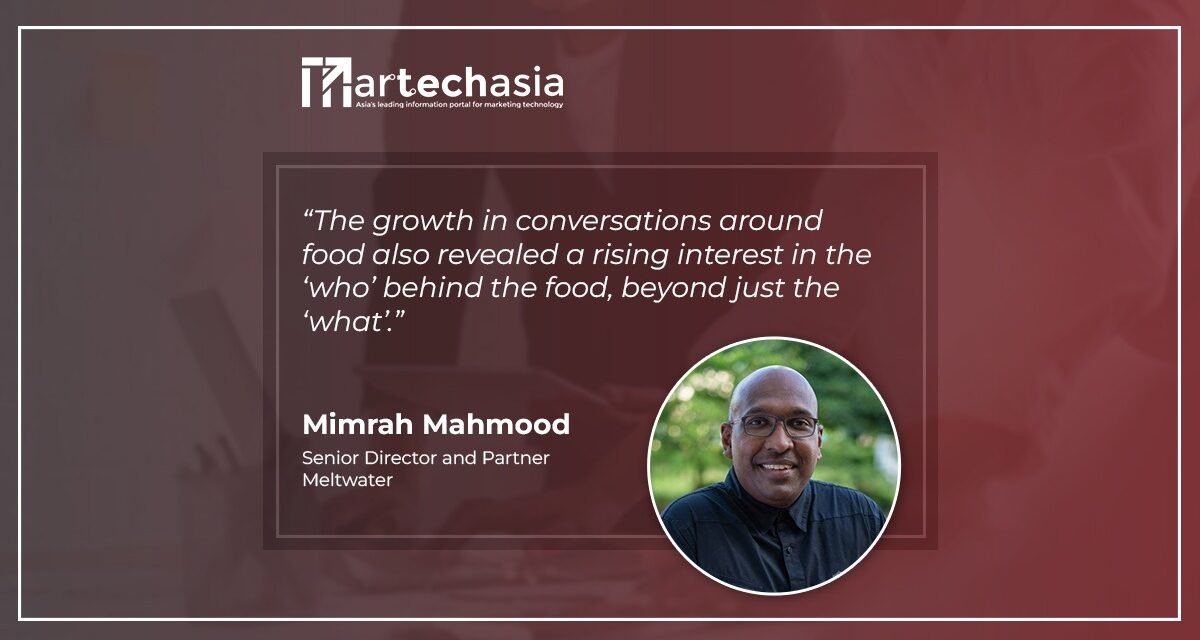From turning restaurants into co-working spaces or hosting virtual events for niche communities, brands can explore interesting intersections between food and other experiences and opportunities for their audiences to connect with other like-minded food lovers, regionally or otherwise.
Food has always been the great equalizer – a universal language and an integral part of our cultural identity, connecting communities through familiar (or unfamiliar) flavors. In a pandemic-era world, lockdowns, supply chain disruptions and inflation have changed how the world approaches meal time -and talks about it. Insights from Meltwater’s Explore tool show that around the world, conversations under the hashtag #foodies have grown more than 9% between August 2021 to July 2022.
It’s rather telling of our times that the majority of conversations between #Foodies focused on themes like gathering, togetherness and connection. For F&B brands in particular, it is increasingly crucial to understand the types of online conversations #foodies are actively involved in connecting with them better and forge authentic relationships with their communities.
Embracing the ‘value’ of good communication
Whether it’s groceries or fine dining, our insights show that rising food prices are a pressing concern for modern #foodies, many of whom took to social media to talk about increased food costs and fluctuations in food supply. We saw a 46% rise in Twitter conversations about food costs between August 2021 to July 2022 – a sign that value is at the top of their minds. As economic and geopolitical instability continues to disrupt daily lives for many, these conversations are expected to grow in volume and frequency, with more communities turning to social media platforms like Twitter to voice troubles and seek solidarity.
In Singapore, for example, the Goods & Services Tax (GST) was recently raised to 8%. As F&B brands brace for consumer cutbacks in response, it is more important than ever for them to communicate the value of their offerings to consumers in a clear and easy to understand way. It is also important for them to be upfront and transparent about changes in costs and value so consumers can feel more at ease, which can help boost brand confidence and loyalty.

Reaching foodies where they are
As #foodie communities grow, so do their conversations. Our research shows that online conversations around food are expanding across diverse geographies and interests. For example, between Q2 in 2021 compared to Q2 2022, the hashtag #foodie on Twitter grew beyond its core base in the USA to attract more users in countries like Thailand and India — two countries that are home to dynamic food and restaurant scenes. Similarly, countries like Malaysia, Nigeria, and Singapore also saw a surge in conversations around food. As food-related conversations continue to grow across social media, brand campaigns will need to cater to more diverse audiences around the world – both physically and virtually.
Interestingly, the hashtag #foodie also overlaps with Twitter’s sports community, as both sets of users have interests focused on communities gathering together as one. Brands can capitalize on this intersection by exploring experiential opportunities that are centered around common values like gathering, togetherness and connection.
Staying on-trend with foodie interests
The growth in conversations around food also revealed a rising interest in the ‘who’ behind the food, beyond just the ‘what’ – our #foodie insights revealed that while #foodie, #food, and #foodblogger were consistently among the most-used hashtags on Twitter, the volume of Tweets tagged #chef increased by 81%. This suggests that #foodies may be increasingly interested in the people behind the food, whether they’re celebrated professionals or courageous home cooks.
With more chefs, home cooks, and recipes making their way into the spotlight, interesting opportunities are opening up for interactive and user-generated branded content. Professional and amateur culinary creatives can also be enlisted as promising micro-influencers – something that brands should capitalize on if they want to tap on rising trends in the creator economy in APAC.
Conclusion
In a world powered by social media, brands looking to reach #foodie audiences will benefit from using such insights to engage with their audiences in innovative ways. From turning restaurants into co-working spaces or hosting virtual events for niche communities, brands can explore interesting intersections between food and other experiences and opportunities for their audiences to connect with other like-minded food lovers, regionally or otherwise. Interesting and impactful campaigns that drive home the importance of connection and togetherness can help brands connect with #foodies in ways that stay true to the diversity and joy that food brings.


















